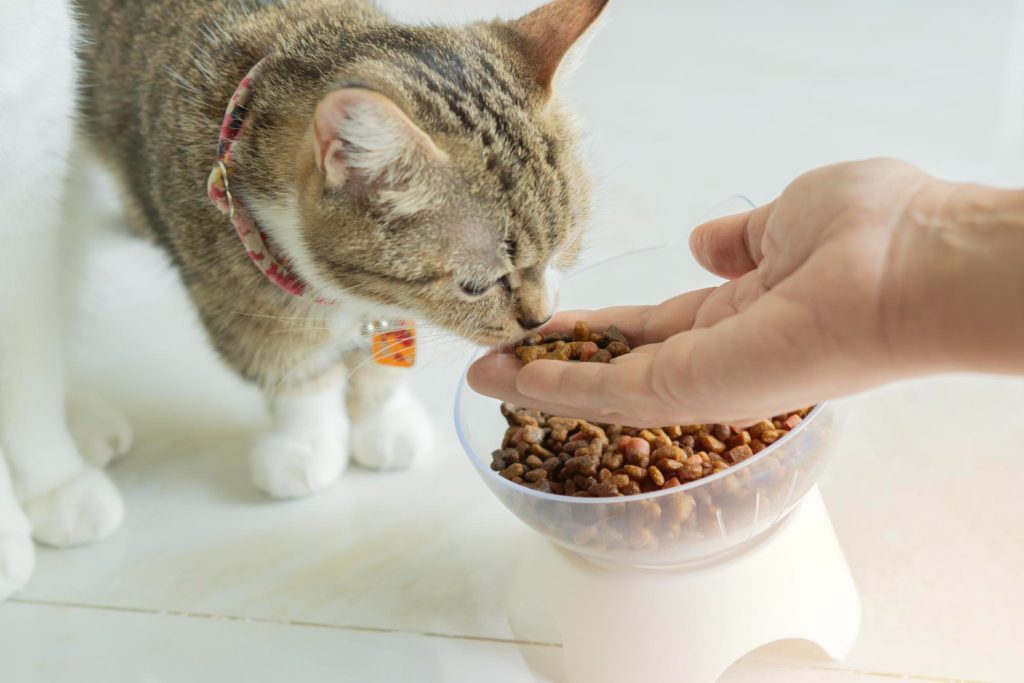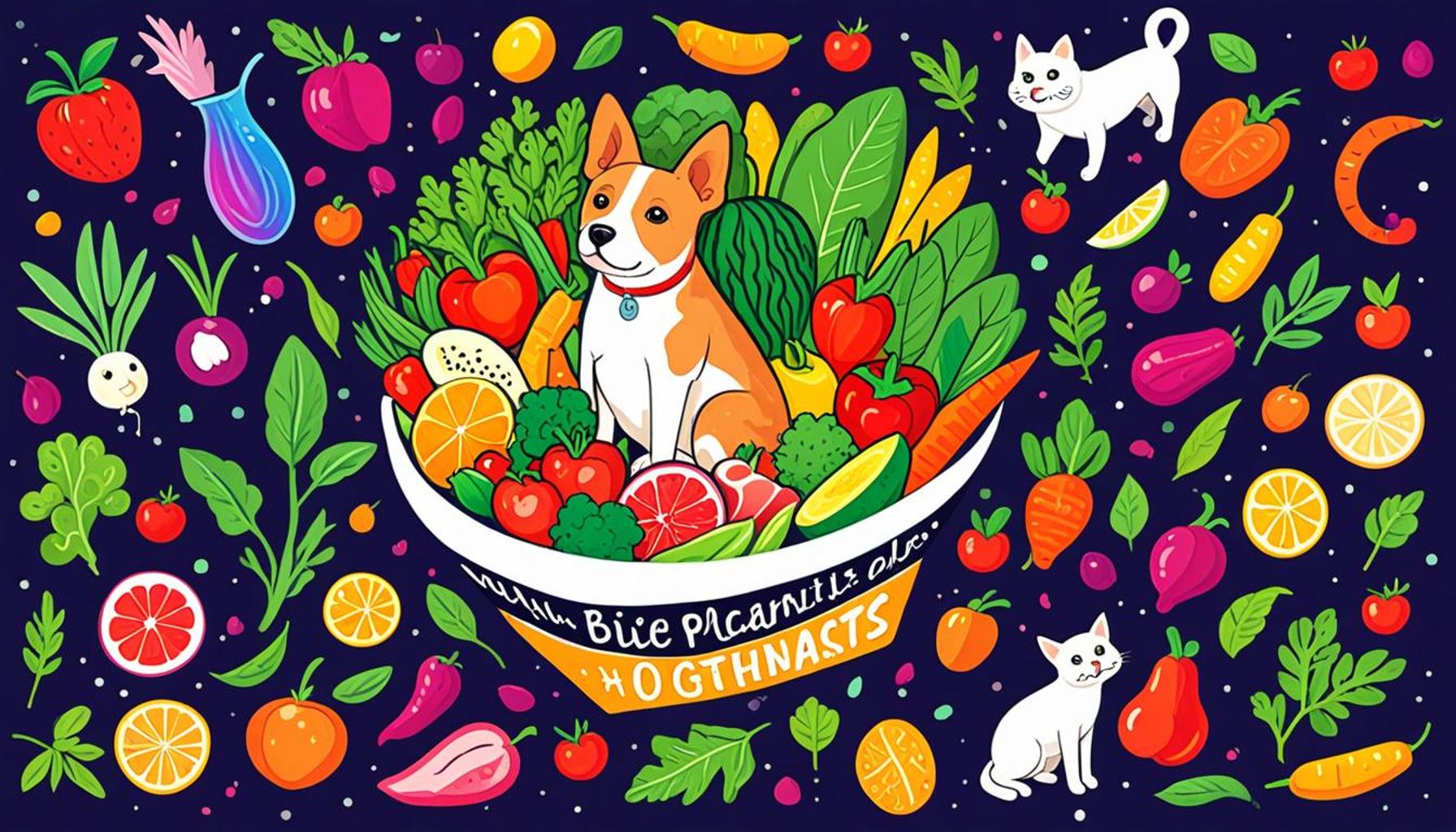Hypoallergenic Nutrition: Options and Benefits for Sensitive Animals

Exploring the Depths of Hypoallergenic Nutrition
Choosing the right food for pets with sensitivities can often feel overwhelming for dedicated pet owners. Allergies or sensitivities in dogs and cats can manifest as a variety of symptoms, such as persistent scratching, gastrointestinal distress, or even mood swings, greatly impacting their quality of life. As a response to these challenges, hypoallergenic nutrition has emerged as a specialized dietary approach aimed at providing relief for these sensitive animals.
But what truly characterizes hypoallergenic options? Let’s delve deeper into its defining features:
- Limited Ingredients: These diets are crafted with a small number of selected ingredients, which minimizes the potential for allergic reactions. For instance, a typical hypoallergenic dog food might contain a single protein, such as duck or salmon, paired with a limited carbohydrate source like sweet potatoes.
- Novel Proteins: Many hypoallergenic foods include uncommon protein sources that pets are less likely to have been exposed to before. This could mean using kangaroo, bison, or even rabbit, which can be particularly beneficial for pets with multiple food allergies.
- Grain-Free Options: A significant number of hypoallergenic diets eliminate grains, such as wheat, corn, and soy, which are known to trigger adverse reactions in some pets, thus focusing on alternatives like peas or potatoes instead.
The advantages of adopting a hypoallergenic diet extend beyond merely resolving visible symptoms:
- Improved Skin Health: Pets on hypoallergenic diets often experience reduced irritation and inflammation. A noticeable shift can include a shinier coat and less itching, contributing to their overall comfort.
- Enhanced Digestion: These tailored diets can also significantly improve digestive health, leading to firmer stools and less gastrointestinal discomfort, such as gas and bloating.
- Boosted Overall Health: Many pet owners report increased energy levels and better behavior in their pets, alongside reduced incidences of scratching or licking—a sign that their pet feels better.
Recognizing the various types of hypoallergenic nutrition options is essential in not only addressing immediate health concerns but also enhancing the overall well-being of your furry friend. Pet food companies are increasingly offering various solutions, from veterinary-prescribed formulas to over-the-counter options that can be purchased at local pet stores.
When considering hypoallergenic diets, consult your veterinarian for tailored recommendations based on your pet’s specific needs. By understanding and exploring these dietary choices, you empower yourself to make informed decisions that could help alleviate your pet’s discomfort and significantly elevate their quality of life. As you embark on this journey, remember that every pet is unique, and finding the right food is an essential part of ensuring they thrive in their home environment.

DISCOVER MORE: Click here to learn about balanced diets for your pet
Understanding Hypoallergenic Pet Diets
As pet owners navigate the maze of dietary options for their furry companions, understanding the nuances of hypoallergenic nutrition becomes paramount. The goal of hypoallergenic diets is not just to alleviate immediate symptoms but to foster long-term health and well-being for animals with dietary sensitivities. But how does one determine the best course of action for a pet that appears to be suffering from allergies or intolerances? Here, we’ll take a closer look at how hypoallergenic diets are formulated and what key factors should be considered when making food choices.
Key Components of Hypoallergenic Nutrition
The foundation of hypoallergenic diets rests on specific ingredients and formulations designed to minimize allergic reactions, while also providing balanced nutrition. Here are key components that define these specialized diets:
- Hydrolyzed Proteins: Many premium hypoallergenic dog and cat foods utilize hydrolyzed proteins, where the protein molecules are broken down into smaller components, significantly reducing the likelihood of triggering an allergic reaction. This process renders the protein less recognizable to the pet’s immune system, paving the way for a smoother digestive experience.
- Single-Source Proteins: Beyond just unique protein sources, hypoallergenic options often emphasize having a single protein source within the formulation. This allows owners to effectively monitor their pet’s reactions to a specific type of protein, simplifying the elimination diet approach.
- Simple Carbohydrates: To complement the protein choice, hypoallergenic diets frequently feature simplistic carbohydrate sources, like brown rice or sweet potatoes, which are less likely to provoke allergies compared to grains commonly found in regular pet foods.
Researching Hypoallergenic Options
With an ever-growing selection of hypoallergenic pet foods available on the market, pet owners can feel empowered to seek out available options tailored to their animal’s specific needs. It is essential, however, to select brands that adhere to high-quality manufacturing practices. Look for products that:
- List Clear Ingredient Labels: Transparency is crucial; reputable brands will have clear labels that list all ingredients without ambiguity.
- Utilize High-Quality Ingredients: Prioritize products made with whole, nutritious components rather than fillers that may lead to sensitivities over time.
- Conduct Transparency Testing: Brands that invest in independent lab testing display confidence in their products and demonstrate safety and efficacy.
Hypoallergenic diets are increasingly being recognized not only for their benefits in addressing food sensitivities but also for their role in enhancing overall health, mood, and vitality in pets. As the landscape of pet nutrition continues to evolve, understanding these key elements helps in making informed decisions that contribute to the well-being of sensitive animals.
| Advantages | Details |
|---|---|
| Reduction of Allergic Reactions | Hypoallergenic diets aim to minimize food allergies and intolerances in sensitive animals, leading to fewer digestive issues and skin irritations. |
| Nutritionally Balanced Options | These specialized diets are formulated to provide essential nutrients while avoiding common allergens, ensuring optimal health for sensitive pets. |
When considering hypoallergenic nutrition for your sensitive animal, it’s essential to explore the various options available. Some products are designed specifically to cater to common allergens, including grains, soy, and chicken. These hypoallergenic formulas often utilize novel protein sources such as venison or duck, minimizing the likelihood of an allergic response. Additionally, many hypoallergenic diets are enriched with omega fatty acids, promoting healthier skin and a shinier coat.Understanding the balance of ingredients is vital; look for options that maintain high digestibility while offering rich sources of vitamins and minerals. Seeking guidance from a veterinarian can further enhance the selection of the right hypoallergenic diet, ensuring it meets your pet’s individual health needs and dietary restrictions. With the right nutrition, sensitive animals can enjoy improved wellbeing and quality of life, paving the way for happier, healthier days ahead.
LEARN MORE: Click here to discover more about meeting your pet’s emotional needs
Navigating the Landscape of Hypoallergenic Pet Foods
Given the rising number of pets suffering from food allergies or intolerances, the pet food industry is experiencing a significant shift. An increasing number of manufacturers are developing hypoallergenic nutrition options that cater specifically to these sensitive animals. As pet owners consider alternatives, it’s essential to explore various types of hypoallergenic diets and their unique benefits.
Types of Hypoallergenic Diets
In the quest to address food sensitivities, several types of hypoallergenic diets have emerged, each with unique formulations tailored for different needs:
- Prescription Diets: Veterinarians often recommend prescription hypoallergenic diets specifically designed for pets with severe food allergies. These diets typically include extensively hydrolyzed proteins and are supported by clinical evidence, making them a reliable choice for pets in need of specialized nutrition.
- Novel Protein Diets: For pets that have developed allergies to common protein sources like chicken or beef, novel protein diets offer alternatives such as venison, rabbit, or fish. These unique proteins are less likely to have been previously ingested by the pet, effectively reducing exposure to allergens.
- Homemade Diets: Some pet owners opt to create homemade hypoallergenic meals, giving them full control over ingredients and preparations. This method can be beneficial, provided that the owner collaborates with a veterinary nutritionist to ensure a balanced diet. However, it requires diligent planning and sourcing of appropriate ingredients.
The Role of Supplements
In addition to carefully curated diets, nutritional supplements can play a significant role in supporting the health of sensitive animals. Many hypoallergenic diets are fortified with essential fatty acids, probiotics, and antioxidants. These elements contribute to:
- Skin Health: Omega-3 fatty acids, for example, help reduce inflammation and improve coat quality, which is especially important for pets with skin irritations.
- Digestive Wellness: Probiotics support healthy gut flora, assisting in nutrient absorption and overall digestive function, which is crucial for food-sensitive animals.
- Immune System Support: Antioxidants can aid in strengthening the immune response, thereby enhancing the animal’s overall health and ability to counteract allergens.
Monitoring and Adjusting Diets
Transitioning a pet to a hypoallergenic diet is not solely about choosing the right food—it’s also about ongoing monitoring and adjustment. Pet owners should:
- Observe Reactions: Keeping a detailed food diary can help track how a pet responds to new dietary changes, noting any improvements or setbacks.
- Consult a Veterinarian: Regular veterinary check-ups are essential to ensure that the chosen diet meets the pet’s nutritional requirements and to address any new symptoms that may arise.
- Stay Informed: As the field of pet nutrition continues to advance, staying updated on emerging research and products can lead to better dietary choices for sensitive animals.
As pet owners embrace the benefits of hypoallergenic nutrition, they open doors to improved health and comfort for their beloved companions. Understanding the various diet types available, the role of supplements, and the importance of careful monitoring empowers individuals to make well-informed choices that significantly impact their pets’ quality of life.
DISCOVER MORE: Click here to learn how early socialization can make a difference
Conclusion: Embracing Hypoallergenic Nutrition for Healthier Pets
In the ever-evolving landscape of pet care, hypoallergenic nutrition has emerged as a beacon of hope for many pet owners grappling with food sensitivities in their beloved animals. As we have explored the various types of hypoallergenic diets, from prescription diets tailored for severe allergies to novel protein options and custom homemade meals, it is clear that there is an abundance of choices available to enhance the well-being of sensitive pets.
Moreover, the role of nutritional supplements, such as omega fatty acids and probiotics, cannot be underestimated; they serve as vital allies in promoting skin health, digestive wellness, and robust immune function. With ongoing monitoring and adjustments, pet owners can ensure that their furry companions thrive on a diet that meets their unique needs, ultimately leading to improved quality of life and happiness.
As awareness of food allergies in pets continues to rise, we urge pet owners to remain proactive in their nutritional choices. Consulting with veterinarians and staying informed about the latest research and hypoallergenic products will empower you to make the best decisions for your pets. By embracing hypoallergenic nutrition, you not only pave the way for a healthier future for your animals but also contribute to a deeper understanding of their dietary requirements, helping them lead a more comfortable and fulfilling life.


